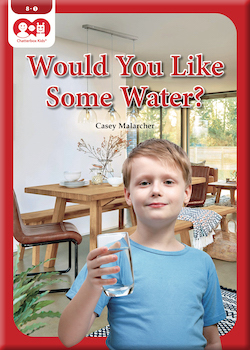
Neither we nor any third parties provide any warranty or guarantee as to the accuracy, timeliness, performance, completeness or suitability of the information and materials found or offered on this website for any particular purpose. The content of the pages of this website is for your general information and use only.

The use of this website is subject to the following terms of use: The term ‘you’ refers to the user or viewer of our website. The term ‘CoolThings Australia’ or ‘us’ or ‘we’ refers to the owner of the website whose registered office is 31 THISTLE ST WEST, STH LAUNCESTON, TAS,7249. If you disagree with any part of these terms and conditions, please do not use our website.

If you continue to browse and use this website, you are agreeing to comply with and be bound by the following terms and conditions of use, which together with our privacy policy govern our relationship with you in relation to this website. Being cool and helping people become cool gift givers is our mission however doing cool things online with shopping carts and the like means that there are some legal things that need to be said.

^ Hawthorne, Ruth (Autumn 1967), "The Folklore Repertory of a Third-Grade Class", Pennsylvania Folklife, 17 (1): 18–25.^ Calhoun, Mary (1963), Honestly, Katie John!, Scholastic Book Services, pp. 89, 91, ISBN 978-4-1.^ Amerine, William Henry (1919), Alabama's own in France, Eaton & Gettinger, p. 284.^ Iona and Peter Opie (1959), The Lore and Language of Schoolchildren, Oxford University Press, pp. 341–342, ISBN 9780940322691.(1928), Fun with Paper Folding, Fleming H. ^ Rigney, Francis Joseph Murray, William D.^ Oliva, David (November 10, 2018), ORIGAMI LAVA.^ Jobson, Christopher (November 12, 2018), "Origami Lava Pours from the Window of an Abandoned Building in Catalonia for LLUÈRNIA", Colossal.^ Mitchell, Claudia Reid-Walsh, Jacqueline (2008), Girl Culture: Studying girl culture : a readers' guide, ABC-CLIO, pp. 245–246, ISBN 978-9-7.Paku-Paku Pacman the Muncher", Origami for Children: 35 step-by-step projects, Ryland Peters & Small, pp. 34–40, ISBN 9781908862327 ^ Ho, Lillian Yee (2002), "Origami and the adult ESL learner", in Hull, Thomas (ed.), Origami 3: Third International Meeting of Origami Science, Mathematics, and Education, AK Peters, pp. 247–256, ISBN 978-1-56881-181-9.(1988), American children's folklore, August House, p. 373. ^ a b Maguire, Jack (1990), Hopscotch, hangman, hot potato, and ha, ha, ha: a rulebook of children's games, Simon and Schuster, pp. 46–47, ISBN 978-2-9.for much longer, the use of paper cootie catchers in the U.S. Although the phrase "cootie catcher" has been used with other meanings in the U.S. The use of paper fortune-tellers in England has been recorded since the 1950s. This shape was introduced to the English-speaking world under the name salt cellar in the 1928 origami book Fun with Paper Folding. In 2018, over 10,000 copies of this shape were used to create an installation resembling lava pouring from a building window, titled "ORIGAMI LAVA" (David Oliva + Anna Juncà), for the Lluèrnia festival in Olot, Spain.

The " salt cellar" name refers to a different use for the same shape, in which it stands on a table with the four points downwards the four open pockets may be used to hold small pieces of food. Other uses Īs well as being used to tell fortunes, these shapes may be used as a pincer to play-act catching bugs such as lice, hence the " cootie catcher" name. The holder then lifts the flap and reveals the fortune underneath. These flaps often have colors or numbers on them. Once the holder has finished switching the positions of the fortune teller, the player chooses one of the flaps revealed. The holder switches these positions a number of times, determined by the number of letters in the color selected, the number originally chosen, or the sum of both. Once the number or color is chosen, the holder uses their fingers to switch between the two groups of colors and numbers inside the fortune teller. The holder then asks for a number or color. In a common method, the player asks a question of the person holding the fortune teller this question will be answered by the device. Manipulations are done by various similar methods. To use the fortune teller, the person telling the fortunes holds the four corners of the paper with index fingers and thumbs on both hands, keeping two pairs of corners together and the other two pairs separated so that only half of the internal sides of the corners are visible.


 0 kommentar(er)
0 kommentar(er)
